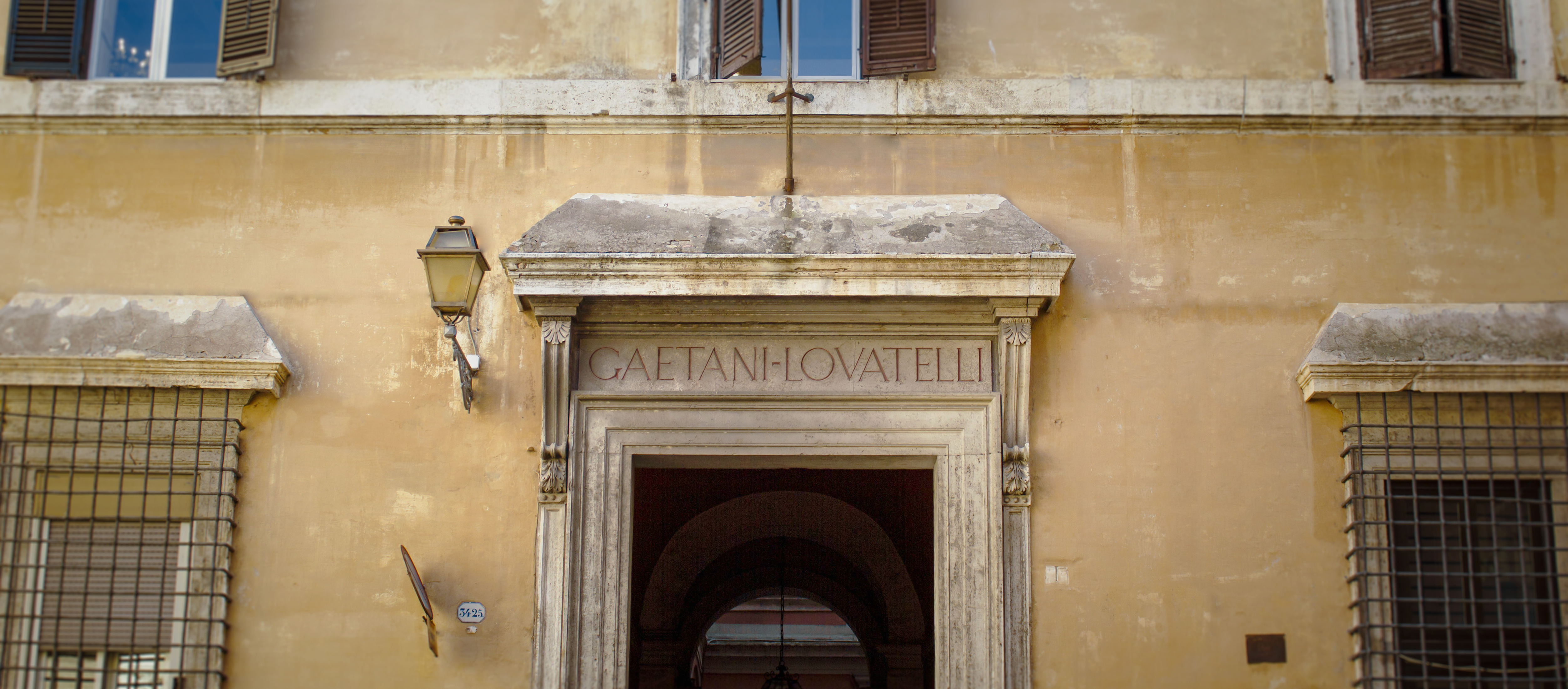Palazzo Caetani Lovatelli, home of Giuseppe Bertolami's auction house ACR Auctions, is one of Rome's best-known and most interesting late-16th-century buildings. Placed in the center of the Campitelli district, between the square of the same name and the smaller Piazza Lovatelli, it is characterized by a very sober, typically late Mannerist style, when the most pronounced flair in painting and art was often contrasted in civil architecture with a simple and severe language. mThe building site of the palace began in the 1680s on the commission of Giacomo Serlupi and was finished around 1620 by Monsignor Girolamo Serlupi, Giacomo's brother.
Building sites for sixteenth-century Roman palaces could normally extend for decades; there was often insufficient space to construct entire buildings in the center of the city and it became necessary, even for the most important princely families, to purchase private house lots at great expense in order to complete an elevation or cantonal on a public street.
The palace remained the property of the Serlupi family until the mid-18th century, then passed to the Ruspoli and later to the Lovatelli, a family originally from Ravenna and related to the Caetani.
Stylistically, on the outside, the palace has an almost military look: three rows of windows, kneeling on the ground floor, architraved on the piano nobile, half-height on the mezzanine; a corbelled cornice on the eaves; two beautiful architraved portals on Piazza Campitelli and Piazza Lovatelli, connected by enfilade.
The inner courtyard also retains a severe style: articulated on three sides with two rows of overlapping arches, partly filled in in the 19th century, it is unfinished on the fourth side. From the courtyard a cordonade of great elegance and breadth leads to the main floor, where ACR Auctions is headquartered.
Building sites for sixteenth-century Roman palaces could normally extend for decades; there was often insufficient space to construct entire buildings in the center of the city and it became necessary, even for the most important princely families, to purchase private house lots at great expense in order to complete an elevation or cantonal on a public street.
The palace remained the property of the Serlupi family until the mid-18th century, then passed to the Ruspoli and later to the Lovatelli, a family originally from Ravenna and related to the Caetani.
Stylistically, on the outside, the palace has an almost military look: three rows of windows, kneeling on the ground floor, architraved on the piano nobile, half-height on the mezzanine; a corbelled cornice on the eaves; two beautiful architraved portals on Piazza Campitelli and Piazza Lovatelli, connected by enfilade.
The inner courtyard also retains a severe style: articulated on three sides with two rows of overlapping arches, partly filled in in the 19th century, it is unfinished on the fourth side. From the courtyard a cordonade of great elegance and breadth leads to the main floor, where ACR Auctions is headquartered.
From the transfer of ownership to the Lovatelli family the palace, and in particular the main floor, became a cultural salon of great level, thanks to the figure of Countess Ersilia Caetani Lovatelli (Rome, 1840-1925), archaeologist and first woman to be appointed Academic of the Lincei. The countess, between the end of the nineteenth century and the first twenty years of the twentieth century, gathered illustrious figures from the world of archaeology and not only, such as Theodor Mommsen or Rodolfo Lanciani, but also Gabriele D'Annunzio, Giosuè Carducci and Franz Liszt, who played several times for guests in the Lovatelli house.
Very evident and interesting traces of the 17th and 18th century splendour of the main floor remain; starting from the entrance, which preserves a grotesque decoration of the end of the 18th century and an access portal probably part of the original Serlupi layout, the space is divided into the classic layout with enfilade halls, following the parimeter of the elevations on Piazza Lovatelli, Via dei Funari and Piazza Campitelli. In the second hall, under the decorated coffers, there is a frescoed frieze from the end of the sixteenth century with scenes of Roman history divided by grotesque backgrounds, much repainted but certainly original; in the fourth salon the lowered vault is decorated in the central panel by a fresco with two large allegorical female figures of the Bolognese school of the second half of the seventeenth century; the fifth salon preserves instead the very elegant architectural decoration with Corinthian pilasters and floral frames, enriched by a beautiful lowered vault decorated with female figures dancing in tempera. The main floor of Palazzo Lovatelli can be considered one of the best preserved of the princely manors of medium importance in the Capitoline Hill area, strategically marking the boundary with the most popular area of the Jewish Ghetto characterized, towards the Portico di Ottavia, by 17th century terraced houses of lesser value.
(Tommaso Strinati)

